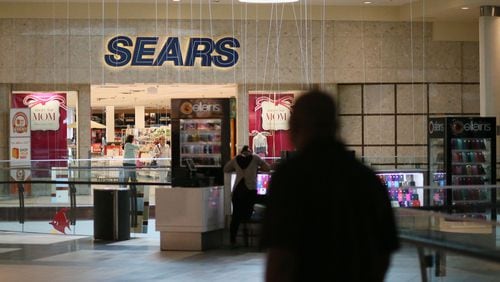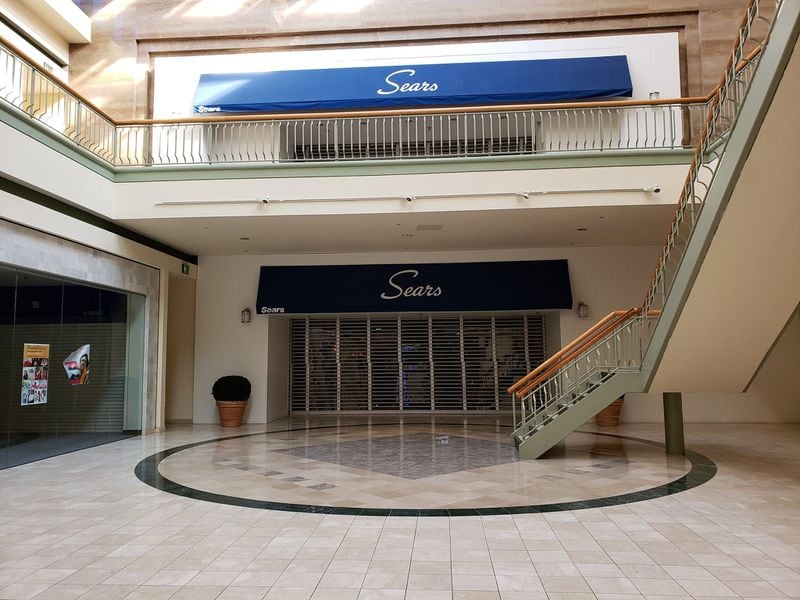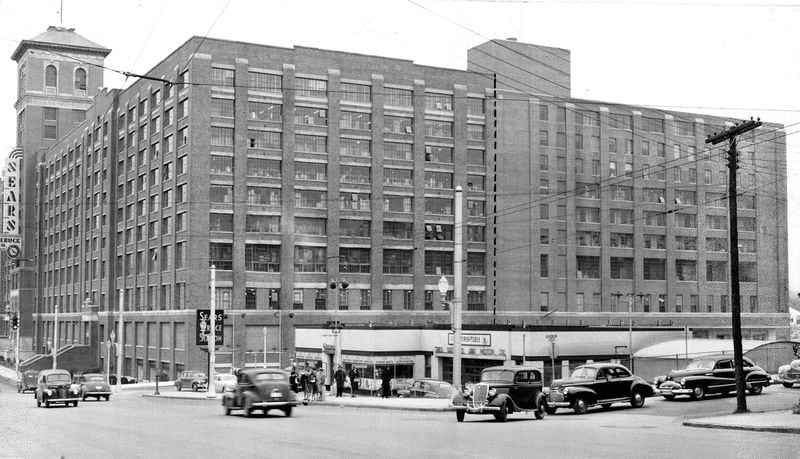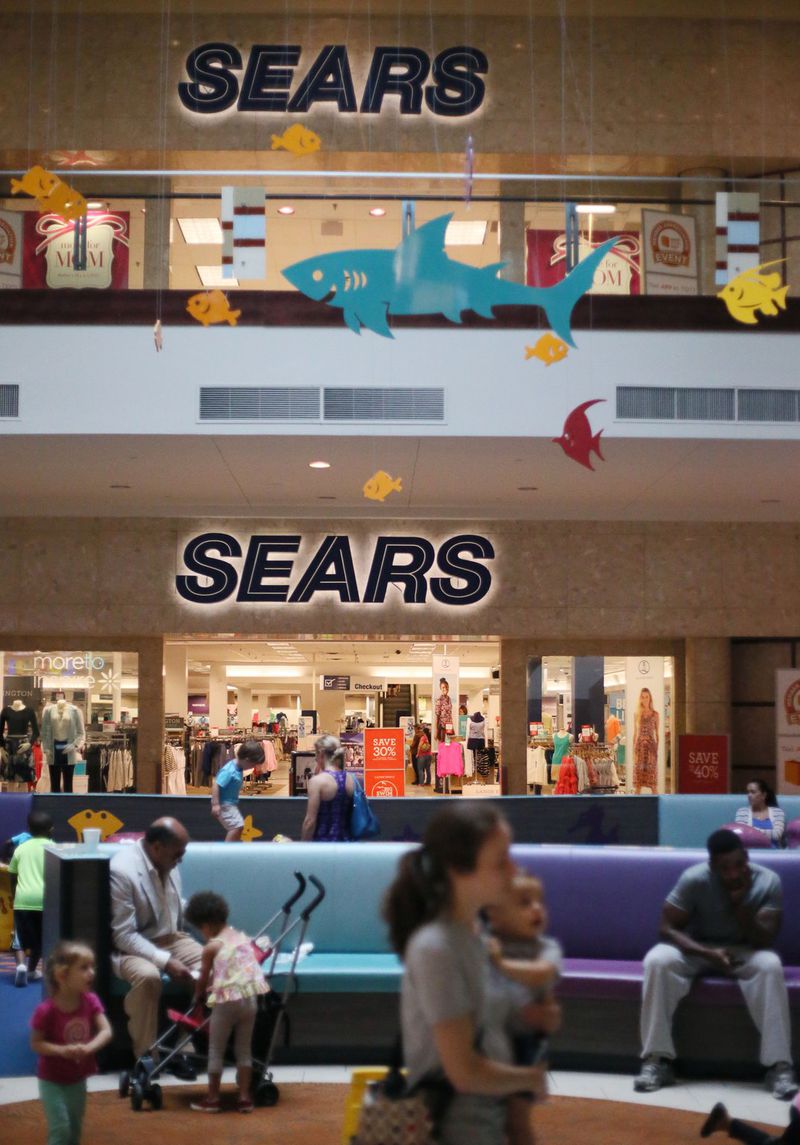Sears, once the mightiest of American retailers, was an endangered species in metro Atlanta even before it filed for bankruptcy protection Monday.
Even before waves of recent closures in the region, it had receded in the minds of shoppers, retail observers say.
“Sears has been irrelevant for a number of years,” said Ken Bernhardt, a former Georgia State University marketing professor.
Even staff at local Sears offices are confused about which other stores remain open. The Sears website lists just two department stores left in metro Atlanta: at Town Center at Cobb and Arbor Place in Douglasville. But at least one other — at Cumberland mall — remains open, though it is expected to close by late November.
Other Sears department stores that have shut in recent months include those at Gwinnett Place, North Point Mall in Alpharetta, Southlake Mall in Morrow and Mall at Stonecrest and Northlake Mall in DeKalb County. Some other stores, including some appliance and independent stores that share the Sears name remain open.
Sears Holdings, which includes Sears and Kmart stores, filed for Chapter 11 bankruptcy protection Monday, with plans to close 142 stores in addition to 46 closings that had already been slated.
On the list in the latest round are a Kmart in Peachtree City and another in Covington, with closings expected by the end of the year and liquidation sales anticipated to begin shortly.
What remains unclear is whether Sears will survive overall and whether the entire chain might ultimately face liquidation, as have other once-powerful retailers such as Toys R Us.
PHOTOS: The second lives of Sears buildings
Edward Lampert, the company’s largest shareholder, has stepped down as CEO but will remain chairman of the board. The company’s filing listed between $1 billion and $10 billion in assets while liabilities range between $10 billion to $50 billion.
The company started as a mail order catalog in the 1880s, then grew as Sears, Roebuck and Co. to a powerhouse with stores across the nation. It became as powerful as Amazon or Walmart are now.
Its Kenmore appliances generated a large and loyal consumer following. So did the chain’s Craftsman tools that carried lifetime warranties. Sears catalogs fed kids’ toy dreams, especially around Christmastime. And its early Toughskins jeans were known for their durability if not their comfort.
The chain's offices, distribution centers and stores were so vast that years later some were turned into landmark redevelopments, from Ponce City Market in Atlanta to a Seattle site that is now the headquarters for Starbucks.
But the struggles for Sears grew over decades. It was removed from the prominent Dow Jones Industrial Average in 1999 and replaced with Home Depot. The Atlanta-based home improvement chain and others had jumped heavily into the appliance business that had long been a strength for Sears. It was just one of the many assaults Sears faced.
Sears lost focus with attempts to diversify, found itself overextended when suburban malls faltered and lost ground to stores such as Walmart. Like many other traditional retailers, it struggled to compete online against more nimble rivals. And its brand and image became fuzzy.
“Nobody knew what Sears stood for anymore,” said Bernhardt, who a decade ago used Sears as a classroom case study on how not to market.
It was a dramatic change, he said.
“The consumer is not a static entity and their needs change over time, and the companies that do the best job of tracking those needs and responding to them are the survivors, versus the companies that don’t.”
“As a kid, my parents bought everything from Sears. When I was growing up, all my clothes came from Sears,” Bernhardt said. “By the time my kids were born there was no way in hell I was buying my clothes from Sears.”
Abe Schear, an Atlanta attorney at Arnall Golden Gregory specializing in retail real estate, remembers big Sears stores on Ponce de Leon Avenue and in Buckhead on the site of what is now the St. Regis Atlanta hotel.
“There is a sadness about Sears going into bankruptcy because it is the brand that so many multi-generational families grew up supporting,” Schear said.
Other vacated store spaces in malls are finding new uses, from new retail brands to restaurants, entertainment options, healthcare spaces and co-working offices, he said. “In many cases property will be re-purposed and maybe even rebuilt.”
Bill Read, an executive vice president with Retail Specialists, said many of the Sears-related properties include large parking areas that gives developers more flexibility to bring in new uses.
“It is easy for Atlanta to survive without Sears,” Read said. For the best properties, the sites “will become something much better and productive for the malls and community they are in.”
The Associated Press contributed to this report
BY THE NUMBERS
$6.8 billion
Amount Sears has lost during the last five years.
$16.7 billion
Annual sales for the fiscal year that ended Feb. 3, down from $36.2 billion in fiscal 2013.
89,000
Number of U.S. employees, down from 226,000 five years ago.
41 cents
Value of Sears’ shares at market close on Friday, giving the company a total stock market value of only $45 million. They had topped $140 in 2007.
SOURCE: LOS ANGELES TIMES










